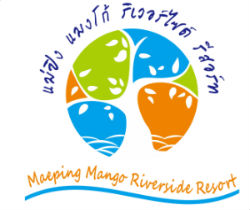Career journalist David Armstrong reflects back and looks forward on a life currently shared with wife Nichapa in Kamphaeng Phet, Thailand.
Career journalist David Armstrong has led and is leading an interesting life. Currently living in Kamphaeng Phet, Thailand. At my request, he agreed to reflect back and look forward on his experiences spanning nearly fifty years, including the good luck and the bad. No small task. I thank him for the opportunity:
KC: When I was a boy I was a regular viewer of the television series, Superman – starring George Reeves. I never wanted to be Superman; I wanted to be like Perry White. You actually lived my dream. Can you talk about the highlights of your career in the newspaper business, beginning with your Jimmy Olson Days, including the different Metropolis cities you worked in?
DA: I was keen on the old Superman series, too, but I liked the Clark Kent role: no matter what he did as Superman, he still had to rush back to the office, hit the typewriter and file a story. But I didn’t aspire to be either Perry White or Clark Kent. I went to university to study medicine. The examiners, however, thought I would be better off if I studied something else. So I started on a liberal arts degree, majoring in history.
I think two key factors in my career were luck and persistence. You need more than whatever talent God gave you. My first piece of luck came in 1969 when I was appointed the editor of the university newspaper (called Tharunka, which is an Australian Aboriginal word meaning message stick). The really lucky part involved a newspaper, called The Australian, which Rupert Murdoch had set up in 1964. The paper was trying to develop readership among academics and students and a small part of their strategy was to offer a modest scholarship to the editor of Tharunka. And that led to a job as a junior reporter on The Australian. I had wanted to work on The Australian as it was a national paper, dealing with big issues – not parish-pump stories like the city papers. I spent the next 15 years reporting and editing with The Australian and a news-magazine called The Bulletin, that was an Australian equivalent of Time or Newsweek. Like The Australian, it dealt with national politics, the economy, the arts, international news and business.
In 1985, I was appointed the editor of The Bulletin, published by the late Kerry Packer’s Australian Consolidated Press. It was a great job: the magazine was more than 100 years old and had a national reputation as the publisher of great Australian authors, poets, artists and cartoonists.
But it wasn’t to last. In 1986, Kerry appointed a new editor-in-chief of the company’s magazines and he thought The Bulletin should be turned into a lifestyle magazine. In a moment of candour, I told him I disagreed and, if that was what he wanted I probably wasn’t the right person for the job. He was to come to the same conclusion. I left.
That was bad luck but I also had some good luck. While working at The Australian I had grown close to News Corp’s Australian chief, Ken Cowley, who was Rupert’s, right-hand man. Developing a friendship with Ken was the biggest single piece of good luck in my career.
Through Ken, I was offered a job as a political commentator in the Sydney Daily Telegraph. The parish-pump stories turned out to be not so boring after all, especially when I could scoop the rival Sydney Morning Herald.
But Ken had other plans. In 1989 he asked me to go back to The Australian, this time as deputy editor.
Towards the end of the year, Ken fell out with the editor, who was removed and re-assigned as a columnist. I was appointed editor, the first journalist to start his career at The Australian to move on to the top job.
At that time News Corp also owned the South China Morning Post in Hong Kong. Ken and Rupert decided to offer me the job there when it was next due to fall vacant. But first, there was another task.
Ken and Rupert were close to Kerry Stokes, the owner of the Seven television network. Kerry also owned the Canberra Times and wanted to appoint an editor from the outside, to bring in some different ideas. So I was sent on “loan” to Canberra for 12 months. I loved that job: producing a national newspaper with a small team (Canberra was not a big city), relying on their enthusiasm, skills and hard work. It was fabulous.
In 1993 I went to Hong Kong – a great adventure. SCMP was a paper with a strong local and international reputation and a time of immense change in Hong Kong and China. I had been there six months or so when Rupert sold the paper to the Kerry Group, under Robert Kuok. Robert asked me to stay on and I did. After a while, the job was upgraded to editor-in-chief of the daily and Sunday papers. But the role had a time limit on it. When I was appointed my late wife Deb Bailey also got a big job, as managing editor of the Australian edition of She magazine. We decided to try to manage a long-distance marriage, visiting each other as often as possible. We did it but it was very hard. If I had known Deb wad to die a few years later, at the young age of 48, I would not have gone to Hong Kong.
After three years I went back to Sydney, where Ken Cowley asked me to go back to The Australian, as editor-in-chief. I did the job for more than 5 years but Deb died in 2001 and although I pushed on I didn’t have the strength or the energy to continue for much longer. The next year, I stepped down.
And that, I thought, would be the end of my newspaper career. I took on a corporate role with News in Sydney but in 2003 Ean Kuok, the chairman of the SCMP Group, asked me to come back to Hong Kong, as group editor-in-chief. I thought if I worked in HK for three years or so, I could build up a decent retirement bank. At that time, SCMP was a big investor in Post Publishing in Thailand, the Bangkok Post company. Post Publishing was without a permanent managing director: one of the board members was filling in until they could find one. In 2005, a deal was done to make me effectively managing director in Bangkok, while having a role called editorial director in HK, splitting my time between the two cities. After a year or so, however, SCMP decided it wanted a full-time editor-in-chief again, while I now found I wanted to stay in Bangkok. So I parted company amicably with my friends in Hong Kong. I continued as managing director until the end of 2008. It was more or less retirement time, although I did spend two fascinating years as chairman of the Phnom Penh Post company and some time as a consultant to the Myanmar Times company.
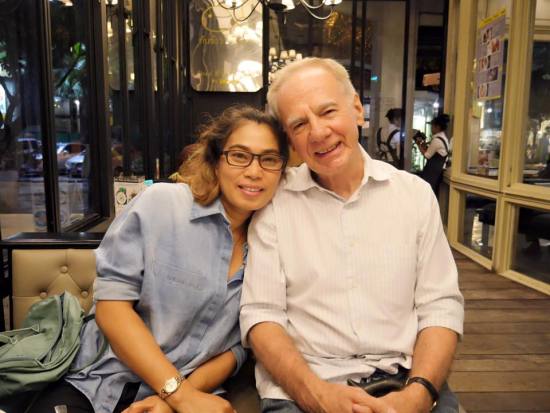
In the meantime, I had met and later married Nichapa. And that led to a new career.
KC: Looking back at your tracks, pick one decade that you would consider the most newsworthy or news filled one. What were the stories that stand out during that 10-year period? They can be major ones that everyone would recognize and/or an important one for you personally.
We had a dress circle seat for a play called History. – David Armstrong
DA: Decades don’t start with years ending in “1” and finish with years ending with “0”. When we think of the 60s, for instance, we think of the explosion of rock music, rock concerts, sex, dope, student protests and all-you-need-is-love. But that era didn’t really get underway until about 1963 when rock and the changes it spawned pushed pop aside and got rid of a lot of the starch and stiffness of the 50s. So my best decade professionally began in 1993, when I went to Hong Kong to edit the South China Morning Post. There, it was not such much a matter of individual stories that stand out as two big long-running stories: the brawling between Britain and China over the return of HK to Chinese sovereignty and the emergence of China as an economic powerhouse. We had a dress circle seat for a play called History.
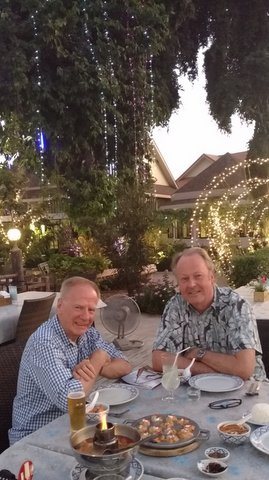
One of the challenges was to work out how the newspaper could play a constructive role, for HK and for China, as the handover approached. We were told the paper was influential, that it was read by some important people in Beijing. If true, it meant SCMP was being read by people who would not react kindly to direct criticism. We decided we would work by explanation and persuasion, doing a lot of editorials on why HK was different and why China’s approach would be unproductive or counter-productive.
One of our lines was that China should not be so belligerent and negative towards HK, that it was going to inherit a great jewel and it should be reassuring the HK people and trying to be positive about tackling some of the problems it saw. I took some satisfaction when China started to calm down as the handover drew nearer. Undoubtedly, their own common sense got them there but I like to think we may have played a small part in Beijing’s deliberations.
When I went back to Australia, many of the big stories seemed to involve indigenous matters. One was a High Court judgment that junked the convenient notion that Australia, before the British arrived, was terra nullius – that no one owned the land – opening the way to more extensive Aboriginal land rights. Another big story was a report into the stolen generations, a reference to the practice in the not-so-distant past of removing Aboriginal children from their families. I was proud of our original reporting into problems in indigenous communities, such as domestic violence and the young lives wasted by glue- or petrol-sniffing. These were no-go areas for some in the media who saw this kind of reporting as demeaning (if not defamatory) for Aboriginal people, rather than as necessary first step in helping to tackle the problems. We also had the first Government decision to turn back migrant/asylum seekers trying to get to Australia by boat – an issue that still inflames passions in the country.
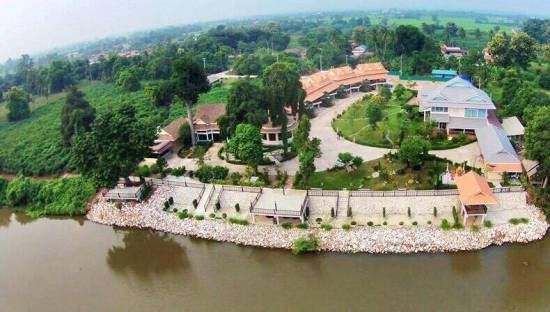
There were, of course, some very big international stories, including the death of Princess Di, the dotcom crash, the Bali bombings, and the tragedy of 9/11 and its aftermath. And one of the most exciting stories in that time was the Sydney Summer Olympics in 2000, two weeks literally of fun and games.
One story that had immense personal meaning was printed in The Australian in 2003, closing off the decade for me. My wife Deb had died in 2001 of motor neurone disease (ALS, or Lou Gehrig’s disease). I subsequently gave a talk on caring for a terminally ill loved one. In 2003 we set up a foundation in Deb’s name and The Australian, under Chris Mitchell, the new editor-in-chief, ran an edited text of the talk. I got more comments on that than on any story I had written during my career.
KC: You educated me regarding headline type used in the serious newspaper industry vs tabloid journalism but I am still curious, what is the tallest headline you ever had during that 10-year period?
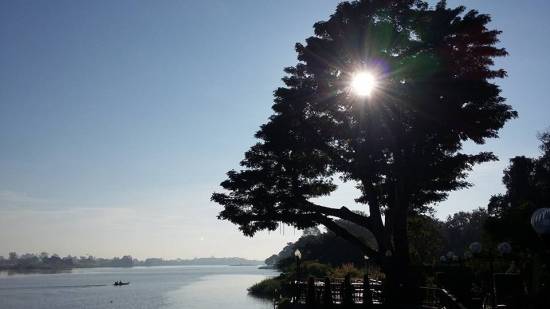 DA: The Australian and the South China Morning Post were both broadsheet newspapers and tended to have modest headline styles. Often the main headline was only 60-point (0.83 of an inch) although we did range up to 96-point (1.3 inches). But when Aboriginal athlete Cathy Freeman won the 400m gold at the Sydney Olympics, we gave the next day’s front page a magazine treatment: a full broadsheet page with just one picture – Cathy with her medal. I suspect the heading was more than 96-points that day.
DA: The Australian and the South China Morning Post were both broadsheet newspapers and tended to have modest headline styles. Often the main headline was only 60-point (0.83 of an inch) although we did range up to 96-point (1.3 inches). But when Aboriginal athlete Cathy Freeman won the 400m gold at the Sydney Olympics, we gave the next day’s front page a magazine treatment: a full broadsheet page with just one picture – Cathy with her medal. I suspect the heading was more than 96-points that day.
KC: Let’s fast forward to the present day. You’ve decided to build and operate a resort on the Ping River in Thailand with the able assistance of your wife, Nichapa. That must make many of your friends think you have figured out the ideal way to live a good life in Thailand. Then again, some friends might think you have gone crazy? Tell me about operating a resort in Thailand.
DA: I can see why people might have either perception but I think I’m very lucky.
Just to correct the record: it is my brilliant wife Nichapa who has built and now runs a resort and restaurant by the Ping River in the Kamphaeng Phet, a World Heritage town halfway between Bangkok and Chiang Mai.
Nichapa is a fabulous cook and she is also an accountant by training and worked as a logistics officer for two international IT companies.
She supervised the construction and now runs the operation – the restaurant and the resort. Nichapa comes from Kamphaeng Phet and we bought the land in 2008. We started building at the end of 2013 and opened two years later.
After about a year, the owner of the construction company we were using pulled out to work on other projects. So Nichapa managed the project from then on – in detail.
Are we (or me) nuts? Nichapa is working very hard but she has a job that uses the full range of her skills and she is doing it very well. I am the support act.
We have a house by a wide expanse of river, in a beautiful garden setting. I have breakfast sitting on the veranda, watching the sun rise and the river flow by. At night, I get a table in a riverside restaurant and eat some of the best food in Thailand. I spend most of my time in Kamphaeng Phet. My original plan, in 2008, was to split my time between the resort and Bangkok. Since then, I have grown eight years older and the communications have become eight years better. So I’m not isolated. I also have a few tasks, like managing social media and the website, that gives me something to do, something to keep my brain ticking over, in my declining years. This is important to keep me occupied, as I can’t play golf.
One of our guests said Maeping Mango was a perfect place in which to do nothing. He meant it kindly: that the garden is peaceful, the river is calm and soothing, the air is fresh, there’s no noise and the food is first class. You can decide if that’s crazy.
